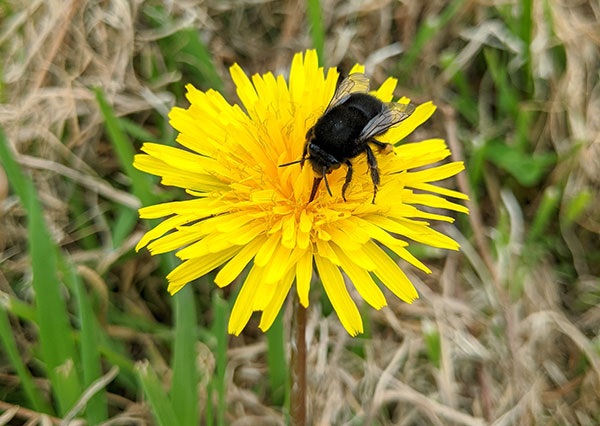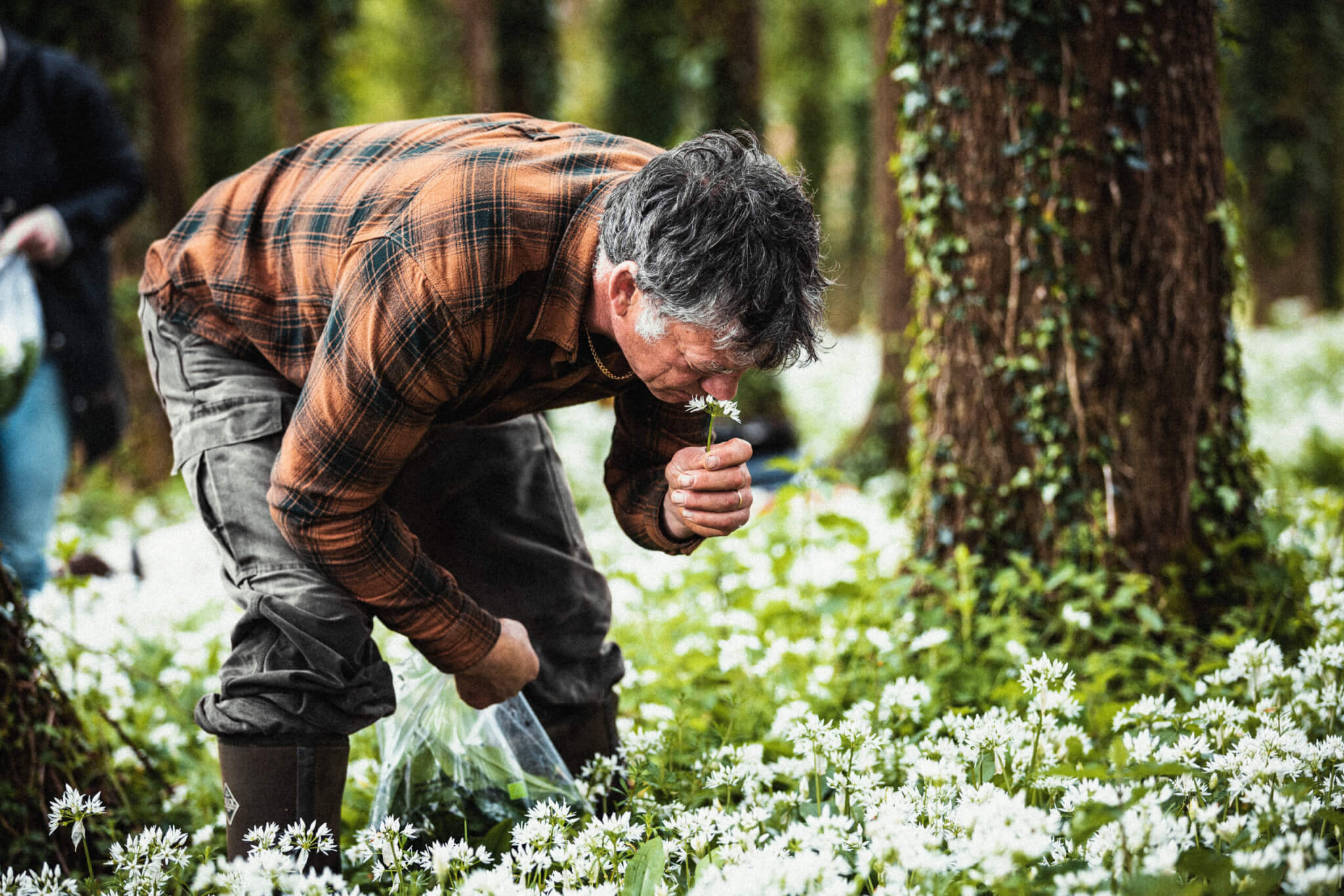As I stand in the corner of one of our fields in the blazing sun, watching a team planting summer cabbages, it seems hard to believe that just six weeks ago we were beginning to worry whether our first fields were going to dry out in time for us to get the first lettuce of the year in the ground.
The warm weather has brought spring on with a vengeance, and already a host of insects are emerging from winter dormancy. Stand by any healthy hedgerow and you’ll see nothing at first, before a flash of white or orange draws your eye to an orange-tip or peacock butterfly. Look closer and there’s a near-black Queen red-tailed bumblebee with its distinctive buff rear on a dandelion, swiftly followed by a hairy-footed flower bee.
As your eye catches on you can see movement everywhere – a seven-spot ladybird, bloody nosed beetles, and a number of hoverflies I couldn’t begin to identify (there are about 250 species in the UK).

All this richness bodes well for the summer: they all do their bit pollinating flowers and improving the soil, encouraging a habitat that will hopefully provide a host of beneficial insects (like the aphid-eating ladybirds and hoverfly larvae) to battle the less helpful ones when they inevitably make their presence known.

The ideal conditions have also meant that our first seasonal additions to the field teams have had a kind introduction to the realities of organic farming. We have more new faces than usual this year, as lockdown has prevented some of our regular team making it over from the continent. Initially concerned about a labour shortage, we have been inundated with applications from people whose lives have been thrown into turmoil by the pandemic.
The new recruits are quite green (most of our usual returnees have been coming over for years, and are old friends who know the job backwards), but I’m really pleased with how things are going so far. If you’d asked them a couple of months ago, I doubt many would have expressed a burning desire to plant and harvest vegetables, but they’ve got the right attitude and that is invaluable. Everyone seems happy to be here; we’ll see how things are after a week of wind and rain.















As a loyal customer [Sooo grateful for the help isolating due to husband well over 70, adding regular fruit and regular meat to our previous regular veg & occasional meat] I just want to say a massive warm WELCOME! to all those new workers out there. Whoever reads these posts, please pass this on, thanks.
In my head I’m with you, in reality we’re scratching to add a little grow-our-own as we isolate, and my defective joints wouldn’t really hack it these days anyway. But I’ll think of you as I tend the little tomato seedlings on the sunny back bedroom windowsill.
Denby
Hear hear – thank you to the people who do the hard work and the planning and adapting for our food supply! I also share the hope that we will come through this with better understanding to make better choices and get more involved. Also to help people whose choices are more limited for whatever reason, so good food and ecology aren’t a luxury. Denby- your home grown tomato seedlings are an inspiration – thank you!
We will pass your thanks on to the lovely folks at the farm. Wishing you both wellness x
And if anyone is thinking “I’d love to grow tomatoes but haven’t any seeds”, here’s how I did it. Note there is no guarantee of any fruit never mind what it mat be like. But I’m optimistic, it’s worth a go. Specially got the neighbour shopping for me to bring fresh tomatoes right at the start of lockdown. Scraped the seeds of a couple into a glass jar and left about 5 days. When swirling and peering up through the bottom revealed the jelly coats had softened off the seeds, washed off in a sieve and dried on cardboard. Then soaked a few hours and sowed in small pots of soil and put in the airing cupboard with the door ajar [ours is about 28C rather hot, otherwise], Removed from airing cupboard to the brightest upstairs windowsill in the house as soon as sprouting. Tip, keep a jug or bottle of water on the same windowsill for watering so it is always at the same temperature they are. They now have first pair of true leaves developing.
So if you start now you will have a late start but if the autumn is mild or you have a conservatory or enclosed porch, you could be enjoying the fruits for a good while.
Denby
Love these growing tips Denby – thanks for sharing!